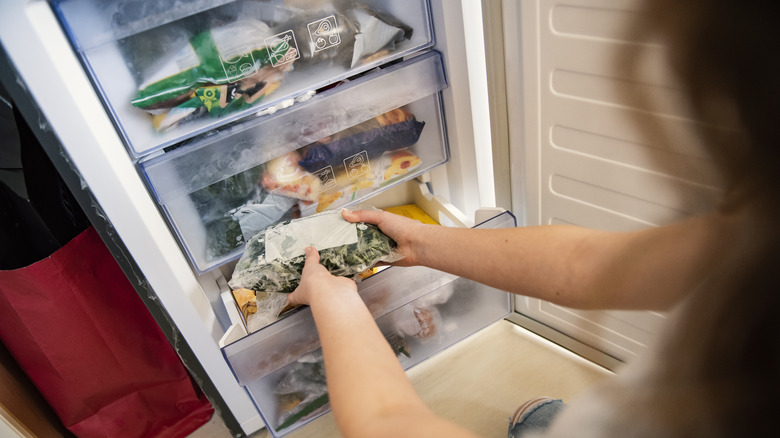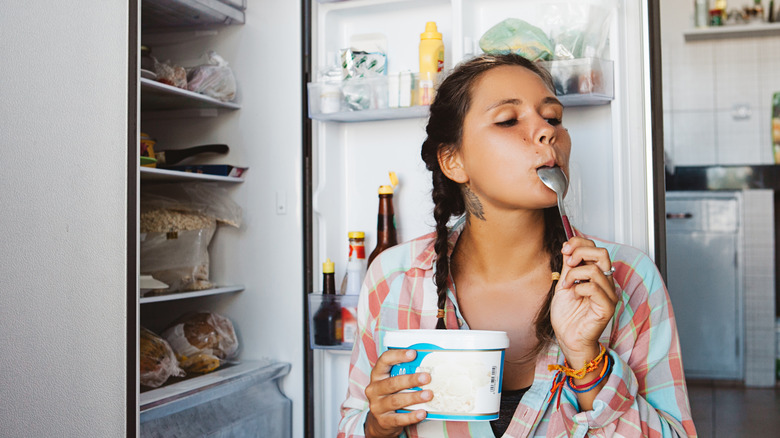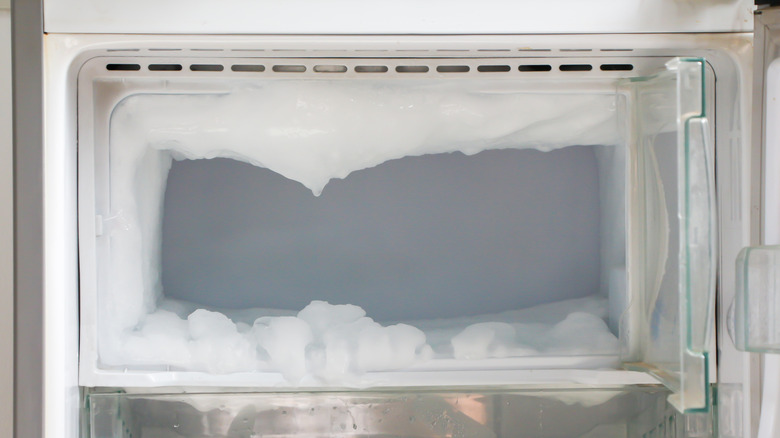The Best Temperature For Your Freezer
It's difficult to imagine what life was like before refrigerators and freezers. These white goods add a lot of value to modern life enabling us to buy food in bulk and store it for longer, which is so much kinder to our wallets. But it's surprising how many of us struggle to get the temperature right. If you're battling against ice and frost in your freezer or food going bad, the solution may be as simple as adjusting the temperature. According to the U.S. Food and Drug Administration (FDA), the recommended temperature for your freezer is at or just below 0°F — but there are other things that could affect how well your food is preserved and your freezer may need to be set higher or lower for optimal functioning.
For example, adding significant amounts of warm or hot food to your freezer raises the temperature. This can potentially thaw nearby frozen food, enabling harmful bacteria to grow, which can lead to food going bad or result in food poisoning. Temperature fluctuations can also cause frost and icicles to build up, reducing airflow, and making your freezer work harder to maintain the optimal temperature. Freezer burn can also happen when frozen food is exposed to the air and often occurs when temperatures fluctuate above 0 degrees F. This can leave your food dehydrated and with ugly discoloration that affects the taste. Freezer burn is most common with meat and fish, although frozen fruits and veggies can be affected.
What temperature is too warm for your freezer
Setting your freezer to anything above 0°F (-18°C) may affect the long-term freezing of your food. However, the recommended temperature may not actually be cold enough, especially if you live in a warmer or more humid climate. Every time you open your freezer door you let warm air in, and this can impact the inside temperature. So, setting your freezer a few degrees lower will ensure that the temperature inside of your freezer never rises too high. Another great tip is to avoid packing your freezer to the brim. You need to make sure that the cold air can circulate and too much food could end up blocking air vents or disrupting airflow. A good guide is to aim for filling your freezer to around 75-80%.
If you're not sure if your freezer is working optimally, check to see if your ice cream is too soft as this could be a sign that although your freezer is freezing the food, it may not be cold enough. If your freezer is set to a suitable temperature but doesn't seem to be getting cold enough, you can try cleaning or replacing the fan and cleaning the evaporator coils. Always turn the freezer off at the power source first to avoid electric shocks.
What temperature is too cold for your freezer
Despite the most commonly recommended advice being to keep your freezer below -18 degrees Celsius, many 4-star freezers can operate down to -25°C — but that doesn't mean you should set your freezer that low. You might think that the colder your freezer is the better, but this isn't necessarily true. Setting the temperature too low can still cause problems, leading to your freezer not working properly and ultimately affecting the quality of your food.
An important feature of modern freezers is the defrost cycle. This allows heat and air to circulate, assisting in the defrosting of excess frost. If your freezer setting is too cold the defrost cycle may not be able to function as it should, and this can lead to an expensive repair job. If you're concerned about expenses, you should also know that running your freezer on too cold a setting can also increase your electricity bill! If you're not sure whether your freezer temperature is set too low, look out for signs like ice and frost forming on the walls or food packaging.


